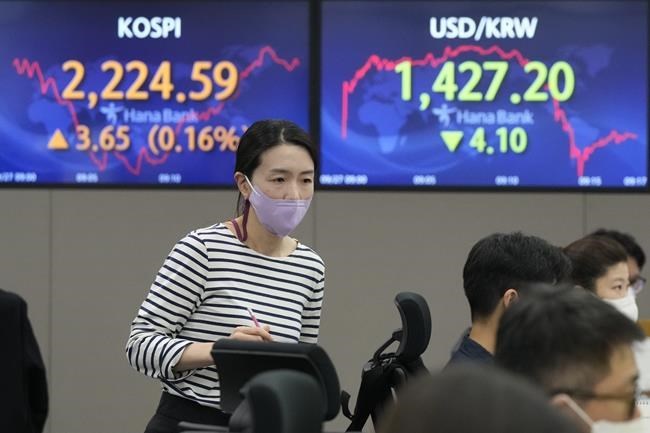TORONTO — Canada's main stock index fell to a new low this year while U.S. markets were mixed after a volatile day of trading that saw stocks swing between gains and losses.
The trading tensions came as markets in both Canada and the U.S. pushed new lows for the year that had some investors wondering if the selling had gone too far, while U.S. Treasury yields continued to push higher on expectations of rising interest rates.
“It's a bit of push and pull between some oversold conditions for the markets, but trying to balance that with the interest rate environment," said Crystal Maloney, head of equity research at CIBC Asset Management.
“It's been a volatile time for markets for sure. Stocks were hanging in there despite the U.S. 10-year (Treasury bond) marking new highs, the highest since 2020.”
The S&P/TSX composite index ended down 19.13 points at 18,307.91 for its lowest level since February 2021 after trading as high as 18,546.76 in the day.
Energy and base metals helped prop up the market with their respective indexes up 2.37 per cent and 2.33 per cent, while utilities, financials and industrials were down.
Mid-sized energy companies recovered some of their losses from a day earlier as Athabasca Oil Corp. gained 7.4 per cent and Baytex Energy Corp. was up 4.47 per cent after both falling almost eight per cent Monday.
The gains came as the November crude contract was up US$1.79 at US$78.50 per barrel, while the November natural gas contract was down 25.4 cents at US$6.76 per mmBTU.
"In terms of oil, similar to the broader markets it seem to be in a bit of a wait and see mode. The U.S. dollar strength has put a lid on some of the rallying but you know WTI was up today," said Maloney.
In New York, the Dow Jones industrial average ended down 125.82 points at 29,134.99. The S&P 500 index was down 7.75 points at 3,647.29 for a new low for the year, while the Nasdaq composite was up 26.58 points at 10,829.50.
There were several indicators out Tuesday that hinted at continued economic strength in the U.S., including housing starts and consumer confidence that came ahead of expectations, said Maloney.
Durable goods orders in the U.S. fell for a second straight month, but she said within the data were details that were generally more positive.
"'The orders for core capital goods jumped the most since the start of the year, which suggests that demand for business equipment remains healthy for now," said Maloney.
The Canadian dollar traded for 72.85 cents US compared with 72.91 cents US on Monday as the U.S. dollar continues to strengthen against currencies globally.
The December gold contract was up US$2.80 at US$1,636.20 an ounce and the December copper contract was up a penny at US$3.28 a pound.
This report by The Canadian Press was first published Sept. 27, 2022.
Companies in this story: (TSX:GSPTSE, TSX:CADUSD=X)
The Canadian Press



